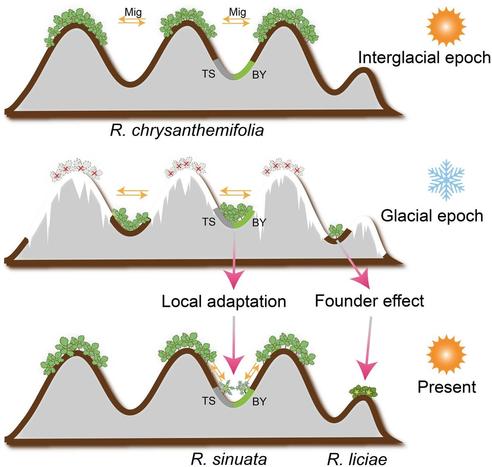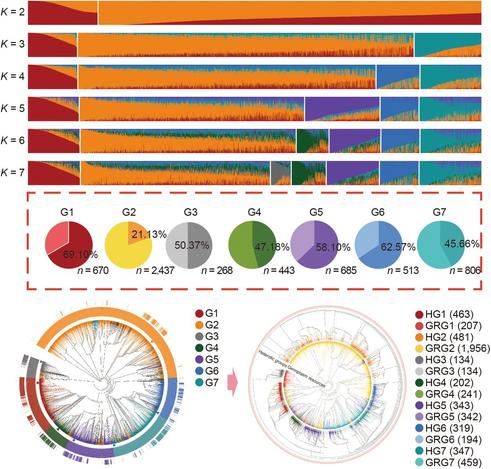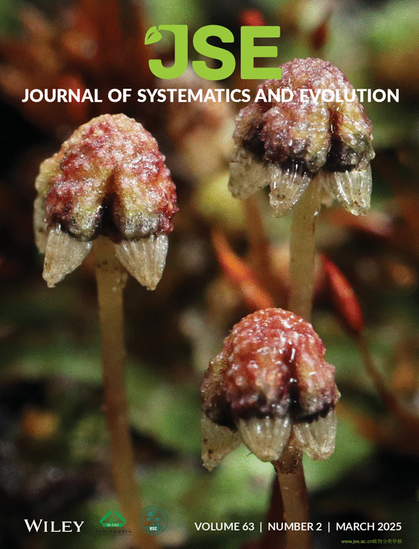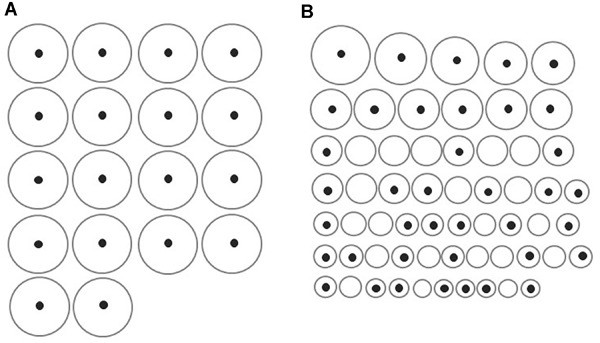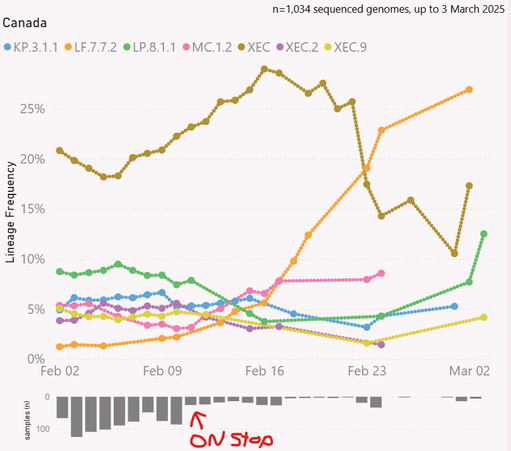A new population #genomic analysis by Liu et al. unravels the #evolutionary processes leading to budding #speciation in Rhodiola sect. Trifida.
Explore their findings, right here in the latest from #JIPB! 👇
https://doi.org/10.1111/jipb.13905
@wileyplantsci
#PlantSci #botany
#genomic
Diverse #Genomic #Landscape of Swine #Influenza A Virus in #England (2014 - 2021), https://etidiohnew.blogspot.com/2025/04/diverse-genomic-landscape-of-swine.html
#Wastewater #sequencing reveals the #genomic landscape of #Influenza A virus in #Switzerland, https://etidiohnew.blogspot.com/2025/04/wastewater-sequencing-reveals-genomic.html
Heterotic groups are crucial for breeders to improve #hybrid vigor.
In a new #OpenAccess paper from #JIPB, Xue et al. reveal key insights into the #genomic divergence of #maize heterotic groups in China, informing future #crop breeding efforts
https://doi.org/10.1111/jipb.13884
@wileyplantsci
#PlantSci #botany
#Genomic #evolution studies have historically focused on #angiosperms...until now!
Join Fujiwara et al. on a deep dive into #bryophyte #genome space and discover opposing evolutionary trends in sister lineages, #mosses and #liverworts.
https://jse.ac.cn/EN/current
@WileyEcolEvol
#JSE #botany
Cathie Wood's Ark Invest Offloads Uipath, Prime Medicine y Repare Therapeutics - Ark Genomic Revolution ETF (BATS: ARKG), ARK Innovation ETF (BATS: ARKK) #Ark #ARKG #ARKK #BATS #Cathie #ETF #Genomic #Innovation #Invest #Medicine #Offloads #Prime #Repare #Revolution #Therapeutics #Uipath #Wo...
https://butterword.com/cathie-woods-ark-invest-offloads-uipath-prime-medicine-y-repare-therapeutics-ark-genomic-revolution-etf-bats-arkg-ark-innovation-etf-bats-arkk/?feed_id=16906&_unique_id=67f9dac0c760d
#Genomic #signatures and #host #adaptation of #H5N1 clade 2.3.4.4b: A call for global #surveillance and multi-target antiviral strategies, https://etidiohnew.blogspot.com/2025/04/genomic-signatures-and-host-adaptation.html
#KnowledgeByte: #Genomic #Grammar is a set of associated components for each disease. It can help identify important differences and common aspects in a specific group of diseases.
https://knowledgezone.co.in/posts/Genomic-Language-and-Grammar-660a4bdaa9d5187c1262c9ed
Assumptions about #genomic #diversity may create #conservation illusions of population health.
https://phys.org/news/2025-03-assumptions-genomic-diversity-illusions-population.html
🎉Meet one of our winners!🏆
Wu et. al review #genomic architectural variation of #plant #mitochondria in this 2024 #JSE Outstanding Papers Award winner!
🔓👇
https://jse.ac.cn/EN/10.1111/jse.12655
@WileyEcolEvol
#PlantSci #systematics #evolution #botany
Multi-trait ensemble #genomic prediction and simulations of recurrent selection highlight importance of complex trait genetic architecture for long-term genetic gains in #wheat
📰 Story: https://botany.one/2023/03/unlocking-the-secret-to-breeding-high-yielding-protein-rich-wheat/ via @botanyone
🔬 Research: https://doi.org/10.1093/insilicoplants/diad002 from Nick Fradgley, Keith A Gardner, Alison R Bentley, Phil Howell, Ian J Mackay, Michael F Scott, Richard Mott, James Cockram
#PlantScience
🤩 We are delighted to announce the selected organisations for a new pilot programme of the #OpenDataEditor. We look forward to seeing ODE in action to ensure the quality of #genomic, #infrastructure and #climatedata in such diverse parts of the world.
#Ontario, Canada peeps or anyone have insight into why there was a sudden stop of uploading Ontario COVID #genomic sequence data to #GISAID? Last sequences dated Feb. 12, 2025 and nothing since. There was still 57-83 sequences a day being uploaded before that.
Now only a small # of sequences coming from NB & Quebec and periodically a few from AB, BC, and NS for all of Canada. You can see the big drop in Canada sequences when ON stopped submitting so very difficult to track what is going on.🧵1/
"The first #genomic study of ancient people from the eastern Maghreb region — present-day Tunisia and northeastern Algeria — shows that #StoneAge populations who lived there more than 8,000 years ago were descended, in part, from European hunter-gatherers."
https://www.nature.com/articles/d41586-025-00764-2
Simultaneous #aerobic and #anaerobic #respiration in a Yellowstone #thermophile challenges scientific norms
#mightymicrobes #extremophiles #chemolithotroph #genomic #metabolism #bacteria #archea #funded_by_NASA #funded_by_us
https://phys.org/news/2025-03-simultaneous-aerobic-anaerobic-respiration-yellowstone.html
PhD from Sept 2025: Graph Neural Networks linking #pathways and #ontologies, trained using #genomic and functional genomic data to understand #cardiometabolic disorders . More at https://tinyurl.com/GNNEgid
#deeplearning #diabetes #obesity
Introducing #Evo_2, a predictive and generative #genomic #AI for all domains of #life.
#evolution #diversity #OpenGenome2 #funded#by_NSF #funded_by_US
https://phys.org/news/2025-03-evo-generative-genomic-ai-domains.html
Phylogenetic #discordance cannot identify #genomic #reassortment events: a case study with the avian #influenza virus #H5Nx, https://etidiohnew.blogspot.com/2025/03/phylogenetic-discordance-cannot.html
